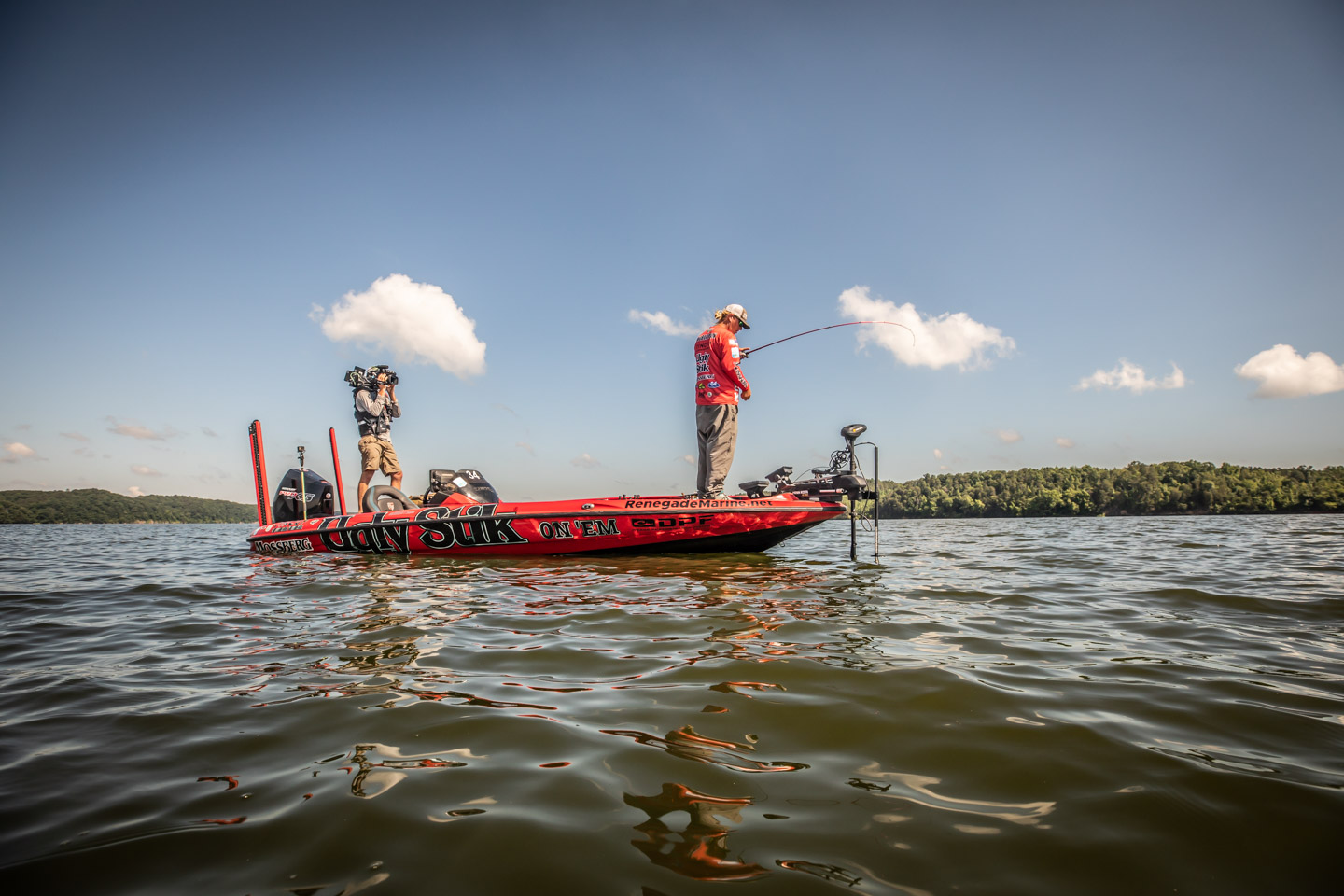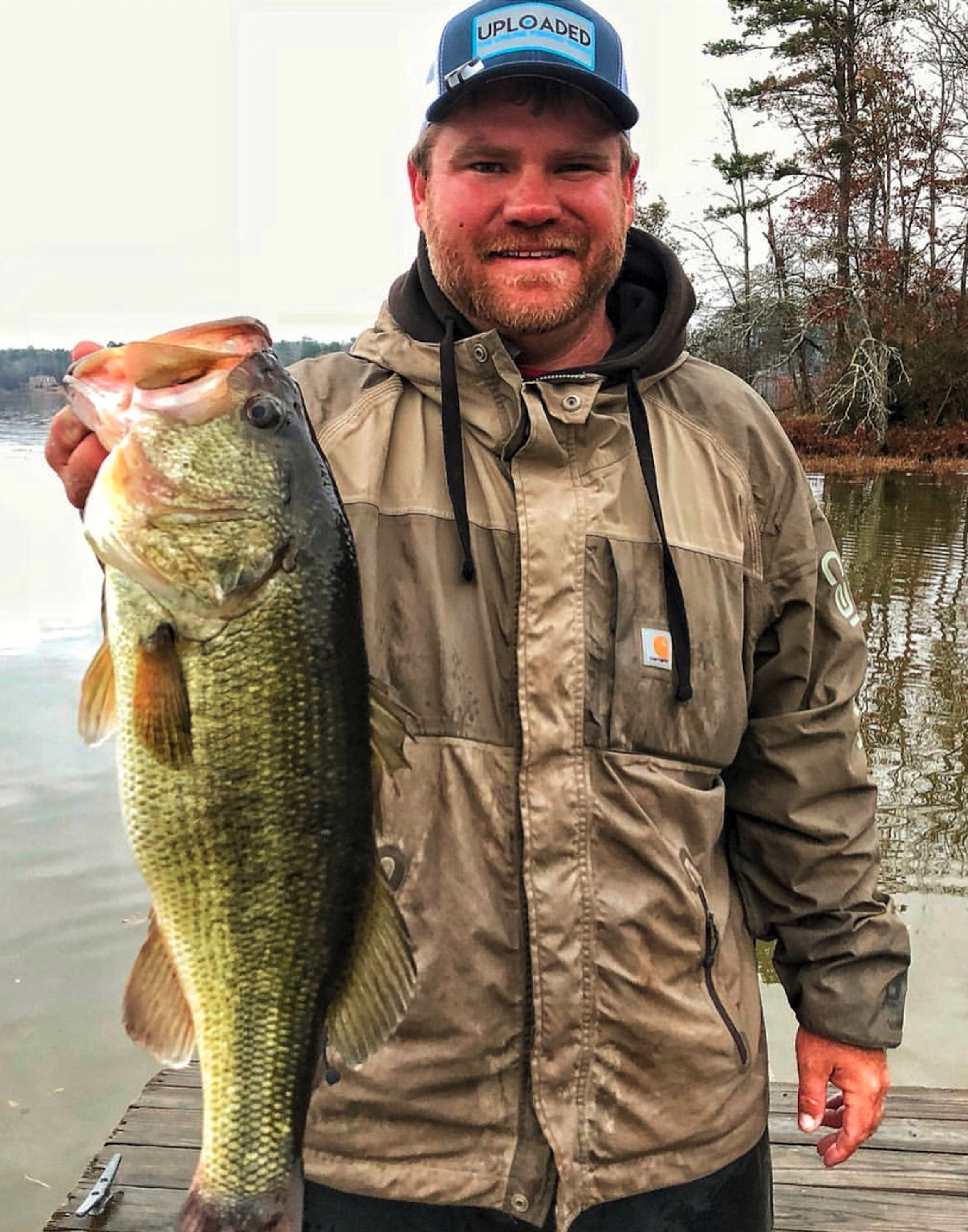
As practice winds down for the Guaranteed Rate Bassmaster Elite on Lake Oahe, anglers ramp up their intensity in search of a consistent bite from the giant smallmouth that roam these water.
A good portion of the 90-angler field that will be competing on Oahe this week made the trek to South Dakota around this time last year to pre-practice this expansive fishery. And most of those anglers had little to no prior knowledge of this giant oasis amidst the plains of the Midwest.
Late last August, reports began to creep out that Oahe was something special. As anglers started to hear their competitors opening up about how good the fishing was, the relay of exciting news exploded.
“This time last year, this was the best fishery in the country, hands down,” Elite angler Matt Robertson admitted. “I don’t know anybody that came up here that didn’t catch 20 to 23 pounds like it was nobody’s business.”
Those exciting reports built up anticipation for this event among the anglers and fans alike. After the first two days of practice though, that excitement has subsided among many of the anglers and turned to more of an anxious confusion.
“This year, it’s like a different lake. Every place I caught them on last year doesn’t have a bass on it now. The lake is about 3- or 4- feet lower than this exact week last year. I don’t know if that has something to do with it.”
Though the fish are fewer and farther in between, they are still relatively large, and Robertson is catching them in the same basic manner as he did a year ago in pre-pracitce.
“I’m seeing quite a few 3-pounders. You’re going to see some 20-pound bags of smallmouth no doubt. There’s no telling what it’ll take to cash a check, that’s such a toss-up. But 16 pounds a day will be good, I think. And I think 13 or 14 might get you paid.”
Lake Oahe is not the typical fishery Elite anglers are used to or really like anything the majority of these seasoned professionals have ever seen before. This lake basically equates to a massive 200-mile stretch of river run with very little contour, no vegetation in the water and a scattered speckling of boulders and rock piles offering the only refuge for the smallmouth bass in these waters. But even those pieces of cover aren’t automatic fish holders like one would think.
“It’s a huge lake, but I think you’re going to see it fish pretty small. You’re going to see guys catch them on anything from going down the bank throwing a Whopper Plopper to fishing out deep with a drop shot or a Ned rig. Literally everything is going to play. But I think the out deep game is going to end up winning it.”
The forage present in Oahe is what really differentiates it from the more traditional smallmouth fisheries of the North like Lake St. Clair, Lake Huron and Lake Ontario. There, goby reign supreme. Here on Oahe, large herring are the primary object of pursuit for smallmouth.
“The smallmouth here are different. They feed on herring. It’s not a blue back herring. But nonetheless, these aren’t your St. Lawrence River smallmouth. These smallmouth here eat big bait. I’ve seen them blow an 8-inch herring out of the water.”
The fishing has been very inconsistent for Robertson and a few others that have commented on their practice so far. The primary bait source being herring is likely to blame. The fish here are “pelagic,” according to one angler, and “nomadic” in the words of Robertson. These two basically mean the same thing — these fish are always on the move.
“The fish seem to be real bait related, just like any other herring lake. Basically it’s almost like fishing Lake Hartwell, just for smallmouth. Just like the Hartwell spotted bass, whenever fish are feeding on herring, if the herring leave the bass leave.”
The fact that Oahe fishes similarly to many of the herring lakes where a few of the competitors hail from, like Smith, Hartwell and Lanier, will be an interesting story line to follow this week. Will the smallmouth gurus like the Johnston brothers have a massive advantage? Or will the scales be balanced a bit for guys like Jake Whitaker and Shane LeHew who grew up in pursuit of bass chasing herring?
“I think you’re going to see your typical smallmouth guys do well here, just because you catch them on your conventional smallmouth stuff out deep. But I think you’re going to see some guys who like to chuck 4- and 5-inch swimbaits or a topwater do well too. I don’t know if that bite will hold out, but you’re going to see some guys do some different stuff and catch some good bags.”
There is one primary difference that Robertson has identified between what he’s seeing on Oahe and what you might expect to see on a fishery like Hartwell.
“You don’t really call them up as much with a topwater. I mean, up shallow they’re going to eat a topwater. But you’re pretty much using your standard smallmouth techniques here.”
Robertson is still putting together his game plan for the week, but as of right now the outline is clear. Find a good number of places where he’s likely to get bit, and then work the milk run come tournament time.
“I want to have about a dozen places to work through. I think they’ll stay put on some of them. I’ve seen some decent size schools out there. You’re basically doing a lot of point fishing. I think if you run enough of those points, you’re going to run into them.”
Though Robertson expects the fishing to be a little tough, and quite inconsistent, he still foresees some big bags of smallmouth being weighed in. Whether the shallow bite covering water in pursuit of wolfpacks of smallmouth will hold up for four days or not is yet to be seen. Robertson’s money is on the deeper, more traditional smallmouth approach.
For fans, this should be a fun one to watch as the anglers will be challenged to adjust and deal with the stress of fishing on the fly. Tune in to Bassmaster LIVE starting Thursday morning at 7 a.m. CT to follow along with all the action from out on the water.





